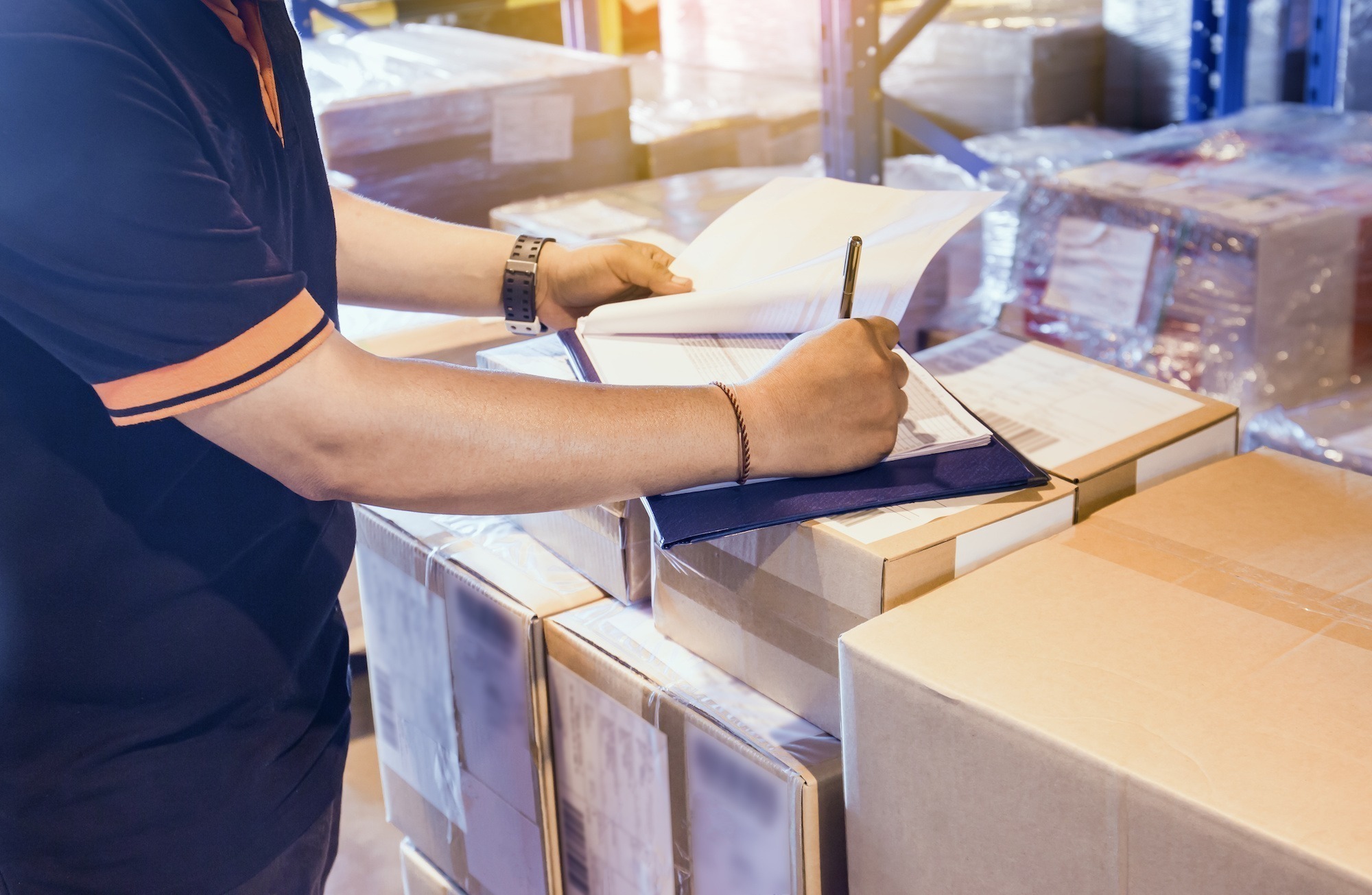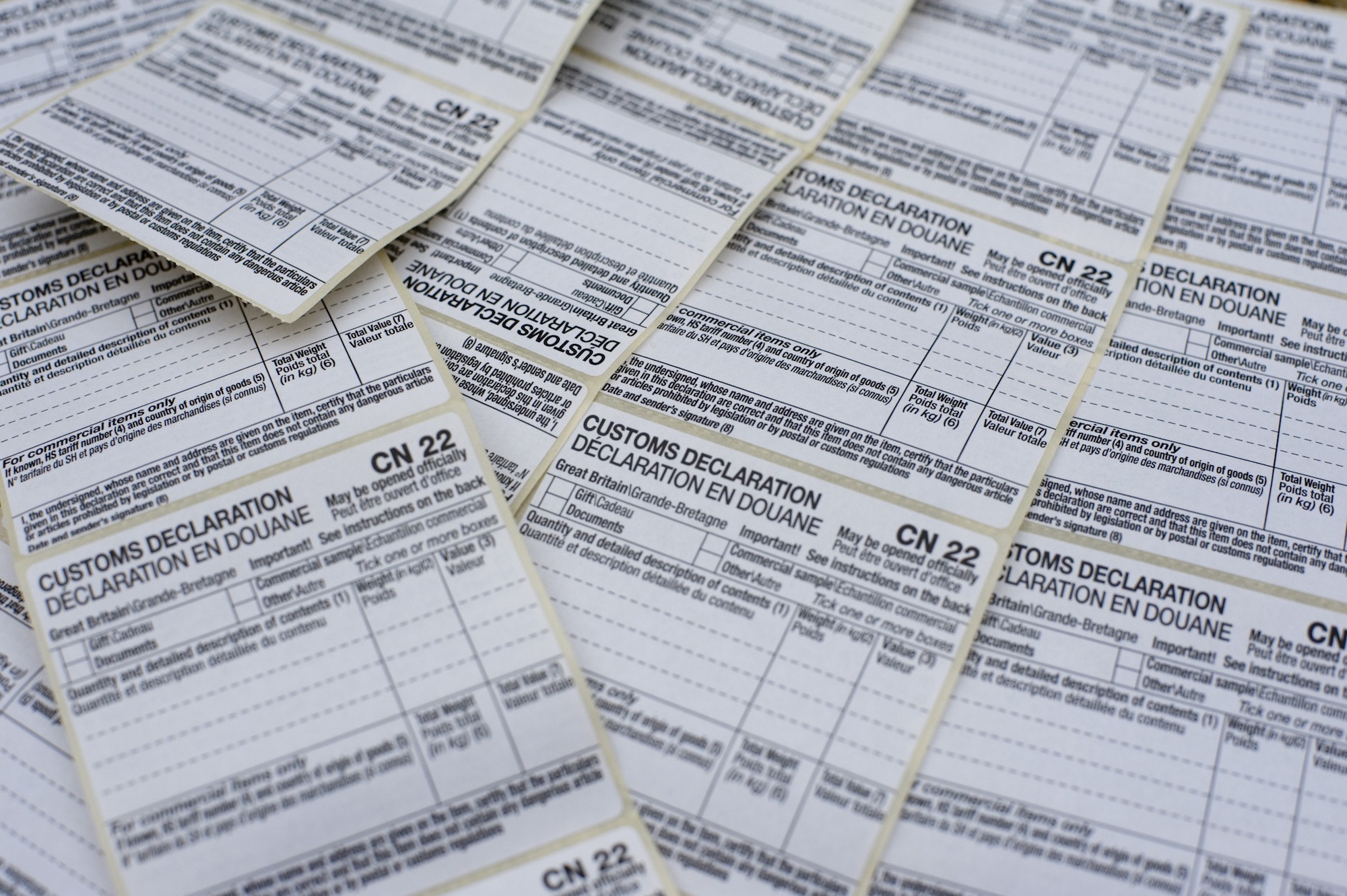One misstep with customs could lead to a disaster. What can you do to avoid this?
Cross-border shipping is a lot like baking. You’ve got to have the right tools, follow instructions, and do things in the correct order.Plus there’s a lot of questions you have to ask: what are customs, what paperwork is required, what is DDP shipping?
One error could lead to a big disaster.
If you’re unsure what a baking mishap looks like, you need to check out the Netflix series Nailed It!
In each episode, a group of three amateur bakers competes to recreate intricately decorated desserts. If you’ve ever tried to make a picture-perfect dessert from a Pinterest recipe, you know it’s rarely as easy as it looks.
Unfortunately for many stores, cross-border shipping is the eCommerce equivalent of a Pinterest fail.
In theory, it seems simple.
You already ship teacups, necklaces or sweater from one state to another. How much more different could it be to ship to another country?
- You get your first order from the U.K.
- Do a quick internet search
- Send your first order from Nashville to London
It’s that easy right? Well, you could have your customer’s order held up in customs for two weeks or more. Yikes.
What should you have done instead?
Today we’re helping you cook up a recipe to avoid a customs calamity.
We’ll examine what customs is, why it’s a hassle, and what you can do to prevent some of the most common problems.
How does customs work for packages?

When items ship from one country to another, they have to go through customs before they can be released for final delivery.
Does customs check every package?
The short answer is yes. Customs checks all inbound international packages and mail. During this process, a customs officer in the country you’re shipping to will review the package to make sure it meets the country’s laws, regulations and policies. They will also determine what duties and taxes might be due.
If you’ve traveled internationally, you went through customs when you landed. You probably filled out a form beforehand with questions ranging from basic to somewhat odd, like if you’re transporting soil or animal parts. Then you answered a few of the customs officers’ questions once you got off the plane. And before you know it, you’re on your way.
Customs for packages works similarly. You still must have a customs form. The main difference is you’re not with the package to answer any questions the customs officer has. And that’s where the problem lies for many novice cross-border shippers.
Quick clearance requires providing all the right information about your package before you ship it.
Do customs open every package to verify information?
No, customs officers will not open up your package or packages without good reason. Every package is put through a scanner machine, or an x-ray machine, to verify that the items you are shipping match your customs forms. They will, however, instantly open up a package if it is damaged, has irregularities (a.k.a. is not consistent with your declaration form), or if you are a part of a random checking.
How long do packages stay in customs on average?
Unfortunately, there’s no cut and dry answer for how long packages stay in customs. This varies greatly from country to country, and largely depends on what is being shipped. Packages can get approved immediately, which is often the case if the goods being sent aren’t taxable. Other times, delays can occur if duties and taxes are still owed It’s also common for items to get stuck in customs if an item is restricted and cannot be allowed into the country.
Why is customs such a hassle for ecommerce shippers?
Customs can be quite a headache for new cross-border shippers. Last year, World Customs Organization (WCO) Secretary General Kunio Mikuriya said customs officers around the globe were struggling with a “tsunami of small packages” thanks to the growth of eCommerce.
Most customs systems were designed to handle bulk orders from wholesale importers. If you regularly ship three pallets of paper plates, you probably know what you’re doing and have your paperwork in order.
However, the rise of B2C eCommerce drastically changed the volume of packages moving through customs. At the same time, many countries are introducing new regulations to capitalize on the growing eCommerce market or in some cases to protect domestic industries from growing international eCommerce rivals.
Cross-border eCommerce is growing at twice the rate of domestic eCommerce and is expected to represent nearly one-fourth of global online sales by next year, according to recent estimates.
The increase in cross-border shipping is driven by sellers and buyers who may lack extensive experience with customs.
So not only are customs officers dealing with a massive increase in the number of packages they’re processing – many of the packages are missing the vital documentation customs officers need to do their job and move the package along the process.
What causes a package to get stuck in customs?
So what can you do to make sure your package isn’t stuck in customs? The first step is understanding what customs officers are looking for and what can cause them to hold your package.
The most frequent reasons a package gets stuck in customs are:
Missing Paperwork

Every international package will need a commercial invoice and a customs declaration form. The customs officer will use these forms to determine the value of the goods and what duties and taxes may be due. The commercial invoice should include details about the seller and the buyer, as well as more information about each item in the order:
- Unit Price
- Total Price
- Shipping cost charged to the customer
- Total Commercial Value
- Country of origin
- Item description and code from the Harmonized Commodity Description and Coding Systems
Note: Item codes can be tricky for new cross-border sellers. We recommend reaching out to your shipping carrier for help in making sure your inventory has the right HS code.
Having the correct paperwork isn’t just about making the customs officer’s job easier. Incorrect or missing paperwork could result in an officer tearing open your package to inspect it or possible fines or criminal penalties.
Unpaid Duties or Taxes

Nothing is leaving customs if the appropriate duties and taxes aren’t paid. When shipping internationally, you have two choices. You can ship with the duties and taxes already paid (DDP) or unpaid, where the buyer has to pay them upon delivery (DDU).
For more on DDP vs DDU check out our blog explaining both. If you’re shipping DDP and made a mistake in calculating the amount due, the balance will need to be paid before the package is released for final delivery. In this case, somecarriers may bill you for the difference plus an additional fee for their efforts.
Shipping Prohibited Items

A customs officer’s job is to do more than making sure you pay taxes. Customs officers also make sure prohibited items aren’t being shipped into the country.
When shipping to a new country, it’s essential to learn about any specific regulations they have.
Here are a few examples from some of the top growing eCommerce markets:
- China restricts imitation firearms and some types of communications devices and cosmetics.
- The United Kingdom typically bans firearms and other weapons and has restrictions on meat and dairy from outside the European Union.
- Germany, like the UK, also has restrictions on food products from non-EU member countries and additional limits on some medical and dental supplies.
- France imposes restrictions on electronics, alcoholic beverages and food from outside the EU. Additionally, France requires French language on all packaging.
- Canada places restrictions on pharmaceuticals, agricultural, food items, and some pet foods.
This isn’t an extensive list, but hopefully gives you an idea of what types of restrictions could exist in a country you’re considering shipping to. For more detailed information, be sure to check out Export.gov. You should also consider configuring your eCommerce platform so that customers shipping to a country where an item is prohibited cannot purchase that item.
What About Brexit?
As of December 31, 2020, the United Kingdom has officially withdrawn from the European Union. Following this withdrawal, theEU–UK Trade and Cooperation Agreementwas proposedand currently allows for free trade of most goods with no tariffs or quotas. However, companies are still required to comply with customs regulations. They must pay customs fees and VAT (value-added tax), plus provide rules of origin paperwork to prove goods have been locally sourced.
Get more information about Brexit shipping changes
Conclusion
We hope you’re feeling confident enough to begin cross-border shipping. Remember to Nail it and not end up with a shipping fail, follow this simple recipe:
- Check the country-specific regulations for your product at export.gov
- Make sure your paperwork is in order, including information like harmonization codes
- Leverage a partner to take care of the heavy lifting of clearing customs
Building out your global shipping strategy?
Try a 15-day free trial of ShipperHQ
Start my free trial
As an expert in international shipping and customs processes, it's evident that successfully navigating the complexities of cross-border shipping requires a deep understanding of customs procedures, documentation requirements, and potential pitfalls. Having worked extensively in the field, I can attest to the critical importance of attention to detail and adherence to regulations to avoid disruptions in the shipping process.
The article you provided discusses the challenges and potential disasters associated with missteps in customs procedures during cross-border shipping. Let's break down the key concepts mentioned in the article:
-
Customs Process Overview:
- When items are shipped internationally, they must go through customs before final delivery.
- Customs officers review packages to ensure compliance with the destination country's laws, regulations, and policies.
- The officers also determine applicable duties and taxes.
-
Customs Form Requirement:
- Every international package requires a customs form that includes essential details about the items being shipped.
- Unlike personal travel, the sender is not present during the customs inspection, making accurate documentation crucial.
-
Customs Clearance and Inspection:
- Customs officers use scanners or x-ray machines to verify that the items declared on the customs forms match the contents of the package.
- Customs clearance times vary, and factors such as item restrictions, duties, and taxes owed can cause delays.
-
Challenges for E-commerce Shippers:
- The article highlights the challenges faced by customs officers in handling the increasing volume of small packages due to the growth of e-commerce.
- Traditional customs systems designed for bulk orders struggle with the higher frequency of smaller shipments.
-
Reasons for Packages Getting Stuck in Customs:
- Missing Paperwork: The absence of a commercial invoice and customs declaration form can lead to delays or inspections.
- Unpaid Duties or Taxes: Shipping with unpaid duties requires the recipient to pay upon delivery; miscalculations can lead to additional fees.
- Shipping Prohibited Items: Customs officers ensure compliance with regulations, and shipping restricted items can result in delays or rejection.
-
Country-Specific Regulations:
- Different countries have specific regulations regarding the import of certain items. Examples include restrictions on firearms, electronics, food products, and language requirements on packaging.
-
Brexit Implications:
- The article briefly touches on Brexit and mentions that, as of December 31, 2020, the UK has officially withdrawn from the EU.
- The EU–UK Trade and Cooperation Agreement allows for free trade of most goods, but customs regulations still apply.
-
Conclusion and Recommendations:
- The article concludes by providing a recipe for successful cross-border shipping, emphasizing the importance of checking country-specific regulations, ensuring proper paperwork, and leveraging partners for customs clearance.
In summary, the article provides valuable insights into the intricacies of customs processes, emphasizing the need for meticulous planning and compliance to avoid potential disasters in cross-border shipping.